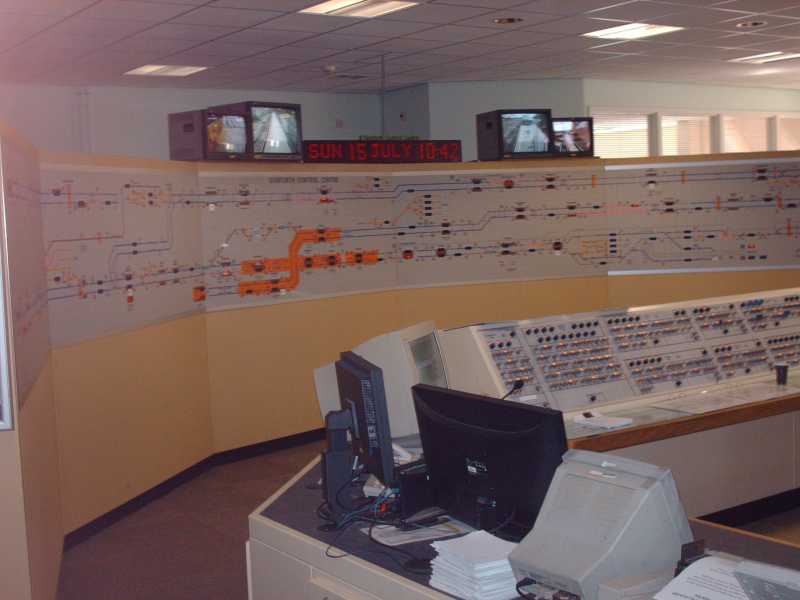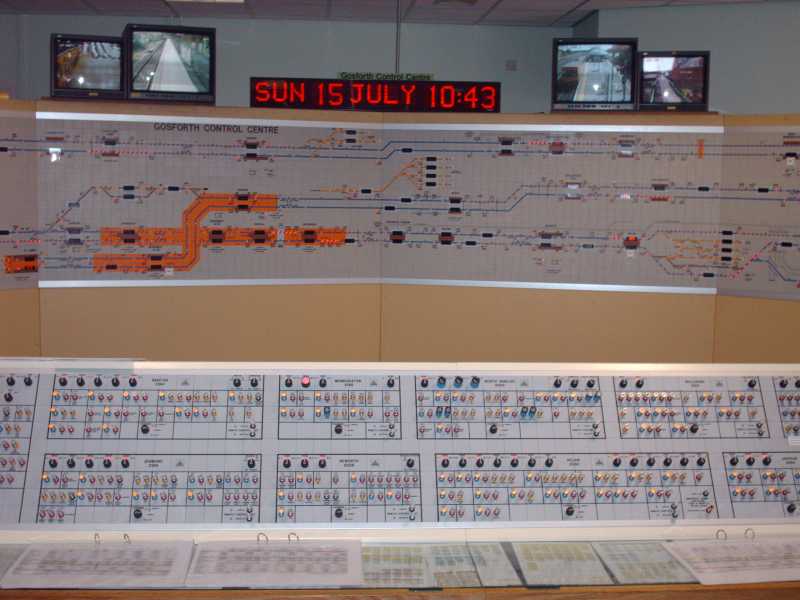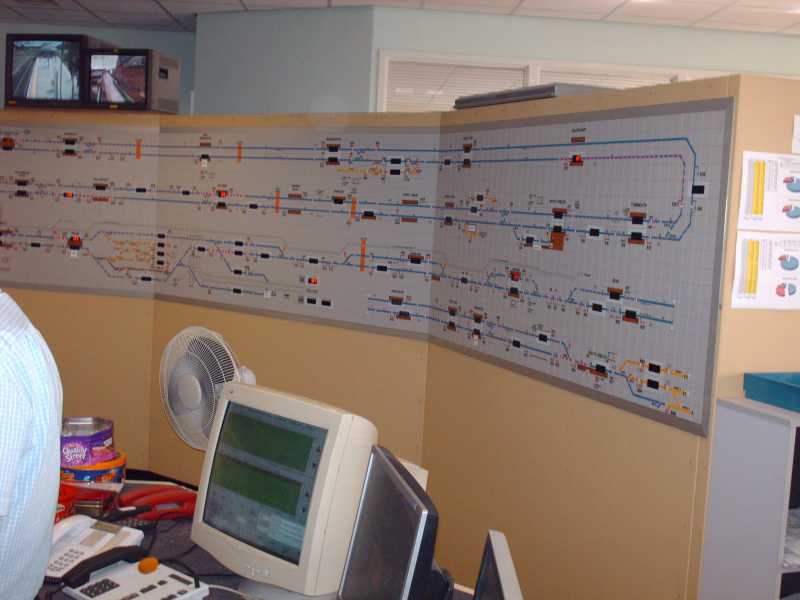Page 1 of 1
| Tyne & Wear Metro Control Room visit 22/06/2012 at 15:49 #33250 | |
|
GeoffM
6416 posts |
John Gallon (Postal) has managed to organise a trip to the Tyne & Wear Metro Control Room on Sunday 15th July (the day after the Newcastle meet). This is a fantastic opportunity that is not likely to be repeated any time soon. Places are limited so priority will be given to those who attend the meet itself. Sign up using the event list I'm about to put up. Please note the Signalbox Visit Rules which apply. Two main things: (a) drinking to excess the night before could still leave you under the influence of alcohol late the following morning, and you'll be turned away if suspected of still being under the influence; (b) the visit is subject to cancellation if T&W decide to cancel, for whatever reason. Neither SimSig or T&W can be held responsible for any costs you might have incurred travelling or staying overnight in anticipation of the event. It is also possible that fewer trains will be running if any engineering works takes place. Enjoy! SimSig Boss Log in to reply |
| Tyne & Wear Metro Control Room visit 22/06/2012 at 18:05 #33255 | |
|
sloppyjag
480 posts |
Curses on my impoverished bank balance and enforced return north on Saturday night.  Aw well, maybe next time. Planotransitophobic! Log in to reply |
| Tyne & Wear Metro Control Room visit 23/06/2012 at 15:18 #33291 | |
|
ajax103
1128 posts |
This is a great opportunity so I do advise people to attend if they can - I can't as I'm going to be on the PS Waverley off the West Coast of Scotland. If I wasn't then I would among the first to sign up, 
Log in to reply |
| Tyne & Wear Metro Control Room visit 27/06/2012 at 17:58 #33447 | |
|
GeoffM
6416 posts |
Good news - the two on the wait list can now attend, and there are a further five spaces available as of now (15 total). Please use the Events link to sign up. Remember, you do NOT need to sign up if you signed up on the previous website.
SimSig Boss Log in to reply |
| Tyne & Wear Metro Control Room visit 15/07/2012 at 22:43 #33999 | |
|
postal
5334 posts |
A brief note to let everyone know that the visit this morning was a worthwhile excursion. Three shots of the panel below to give just a taste of what we saw.   Apart from the signalling panel which had two signallers on duty while we were there, we were also given a guided tour of the power control (which not only looks after the power to the OHLE for the whole of the Metro network but also all of the electrics over the system like station lighting, ticket machines, fire alarms, PA systems etc). and in addition the customer communications which is a wider remit than might appear as it includes monitoring nearly 600 CCTV cameras via a 12 (I think) screen display, links to the local authorities and bodies like the police and fire brigade and also responding to calls from the emergency systems and also the customer enquiry points on the stations. This is all done from the one control room. The shift manager and his staff could not have been more helpful and it was as good a way to waste an hour and a half on a Sunday morning as I've found so far. Post has attachments. Log in to view them. “In life, there is always someone out there, who won’t like you, for whatever reason, don’t let the insecurities in their lives affect yours.” – Rashida Rowe Log in to reply The following user said thank you: Josie |
| Tyne & Wear Metro Control Room visit 16/07/2012 at 10:39 #34007 | |
|
indian_railways_fan
74 posts |
" said:The buttons on the operating panel do not seem to be arranged like what we see usually.Are they arranged numerically or in some other order compared to the geographical order that is more common? Khalid. Log in to reply |
| Tyne & Wear Metro Control Room visit 16/07/2012 at 11:45 #34014 | |
|
postal
5334 posts |
Khalid The buttons are arranged in blocks corresponding to each of the interlocking areas and are broadly lined up with the corresponding areas on the display. Driver Curran, Tom OF and Howard Potter between them will have a full photographic record of the visit and will probably be able to publish a close up if you want to see any particular bit of the set-up. “In life, there is always someone out there, who won’t like you, for whatever reason, don’t let the insecurities in their lives affect yours.” – Rashida Rowe Log in to reply The following user said thank you: indian_railways_fan |
| Tyne & Wear Metro Control Room visit 16/07/2012 at 12:08 #34015 | |
|
indian_railways_fan
74 posts |
" said:Thanks for your prompt reply.Now I understand how the panel is arranged but it would still be great if one of the persons you have mentioned above could show one closeup and explain the panel working in detail.Is it based on the NX system or some other system and are the relay room circuits also different? One more question I have is what is the feedback from signallers on the panel.Which system do they find more comfortable-this one or the traditional geographically laid out panel. I think this layout must make the operating panel more compact? Khalid. Log in to reply |
| Tyne & Wear Metro Control Room visit 16/07/2012 at 12:27 #34017 | |
|
Peter Bennet
5437 posts |
" said:KhalidDid they also get copies of the plans? Peter I identify as half man half biscuit - crumbs! Log in to reply |
| Tyne & Wear Metro Control Room visit 16/07/2012 at 12:29 #34018 | |
|
headshot119
4871 posts |
If anyone can provide some close ups, I'm interested in the section from Kingston Park to the Airport.
"Passengers for New Lane, should be seated in the rear coach of the train " - Opinions are my own and not those of my employer Log in to reply |
| Tyne & Wear Metro Control Room visit 16/07/2012 at 14:59 #34024 | |
|
clive
2823 posts |
There's one button for each possible route - I can't remember whether they're turn switches or push-pull. The standard free-wired NX circuitry has a small part that converts the button pushes and pulls into route requests and cancels. This bit would be replaced by different (and simpler) circuits, but apart from that everything else should be the same. Log in to reply |
| Tyne & Wear Metro Control Room visit 16/07/2012 at 20:09 #34038 | |
|
DaveHarries
1294 posts |
Pity this was a Metro control room, not a mainline signalbox. Going by the photos uploaded by "postal" I think this layout would make a wonderful sim. Dave Log in to reply |
| Tyne & Wear Metro Control Room visit 17/07/2012 at 11:02 #34090 | |
|
kbarber
1779 posts |
I think this is basically a "One Control Switch" (OCS) panel and it looks somewhat similar to the type installed in some London Underground signalboxes in the early 1960s. Would I be right in thinking that, when a route is set, the pushbutton becomes illuminated (or are they perhaps permanently illuminated)? And is it just one colour, or does the colour change according to the status of the route? LT had two major varieties; in one, the button illuminated when selected (an orange colour IIRC) to indicate that the route had been called, but didn't indicate if the route had set or the signal had cleared - that could only be seen by looking at the diagram. The other variety had the buttons illuminated red when not selected (again IIRC); if a route was called but couldn't set immediately the illumination would change to yellow and once the route set and the signal cleared it would change to green. I have a suspicion it would remain yellow for approach controlled signals and that the route would not even begin to set until the controlling track circuit was occupied. All routes would TORR unless put "in king" (automatic working selected). The British Rail version of an OCS panel used switches rather than buttons, turned clockwise 90degrees to select a route; there was no TORR and every route had to be restored behind a train. In the one such box I visited (St Pancras) there were no signals that could be set to work automatically, but I don't know if some OCS panels had auto working available or how it was selected if so. The LT panels seemed to have their switches grouped in blocks in such a way that every possible position in the panel matrix was filled. The BR variety (and its LNER predecessors), unless switches were mounted geographically, had switches in "columns" (ie one behind the other on a sloping console) of up to 5 switches, one (more if necessary) column per signal and unused positions blanked off. Neither variety was as easy to learn as an NX panel but I reckon the BR version had a logic about it that the LT version didn't. The photos suggest the T&W version may have some similarities with the BR layout. Log in to reply |